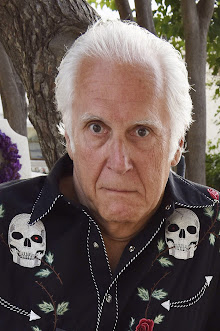 |
Back in the day South Africa was renowned for its goldmining – at one point it was the world’s largest producer of gold. That’s changed over the years. China now leads, and South Africa is only ninth. Mines have a finite lifespan, as do gold deposits. Exhausted mines are supposed to be properly closed down and sealed, and the area rehabilitated. However, as the deposits run down, the big miners who made the early running and lots of money sell the mines on to smaller producers who can still do well by lowering overheads, cutting costs, and often closing themselves down before they have to spend the money on closing the mines down. This leaves retrenched workers with no other source of income, and uncontrolled deserted mining properties. But there’s still gold down there. Just not enough for a commercial company to mine at a profit.
 |
Anyone who has ever spent time down an underground mine knows that it’s not pleasant. Without cooling and forced air equipment, it’s hot and stuffy. To its credit the South African government has passed and enforced strict safety regulations, but accidents and mine collapses still occur, particularly in the ultra-deep goldmines of the Witwatersrand. So why would one choose to go down a disused goldmine (or a disused shaft of an operating mine) using ladders and headlamps? Well, how else can a retrenched miner in a shrinking industry make a living? Mining skills are the only ones they have.
A new
industry has developed around these “zama zama” as they are called. They need
food and water supplied to them below ground. Criminals have set up black
market routes to buy the ore the miners produce, extract the gold, and sell it
on. Needless to say, most of the profit ends up in the pockets of these
middlemen. Just enough to live makes its way back to the miners who spend
months underground in dangerous conditions.
This isn’t
just a South African problem. It occurs wherever major gold deposits exist and
poverty abounds. (Kwei wrote about some of these issues in his novel Gold of Our Fathers set in Ghana.) It’s guesstimated
that 20% of new gold reaching the market is a result of this artisanal mining
and that 80% of the employment in the gold industry is in this category. Yes, eighty percent.
Of course,
it’s illegal almost everywhere. We’re not talking about weekend miners panning
for gold nuggets in a river here. We’re talking about a criminal-controlled
industry that compels people to risk their lives underground in awful
conditions for months at a time. It’s a form of economic slavery.

Stilfontein shaft from above
Something
needed to be done. Unfortunately, the South African Police Service decided to go
for the softest target – the miners – rather than addressing the criminal gangs
in control. They chose a well-used mineshaft at Stilfontein.
The police
sealed the mine, stopping the food and water supplies, and demanded that the
miners come to the surface and surrender. They trapped hundreds, if not
thousands, of the zama zama underground. There was a public outcry as conditions
deteriorated, but the government was adamant. The Minister in the Presidency
said that no help would be given to the illegal miners. “We are not sending
help to criminals. We are going to smoke them out,” she said.
 |
| Police and rescuers at the shaft with a makeshift pulley system |
Eventually, the government relented and allowed food and water down the mine. After that, they mounted a rescue operation to get the miners up. Several were in bad condition. At least four men died.
What has
been achieved? Very little. Since the zama zama have no choice, it will not be
a deterrent to others. And once the focus shifts and the police leave, no doubt a new group of zama
zama will bring their rickety ladders and well-used picks and shovels and go down the Stilfontein mine again.
There have been calls to develop the industry in a regulated way with the miners allowed to sell their production to the state at a fair price. This would supply legitimate employment and help the country's gold production. The difficulty is that to make it reasonably safe, one needs the proper infrastructure and that requires capital. But those sums have already been done by the companies that shut the mines down in the first place.
So what are the zama zama supposed to
do for a livelihood?
I don’t
have an answer.















No comments:
Post a Comment